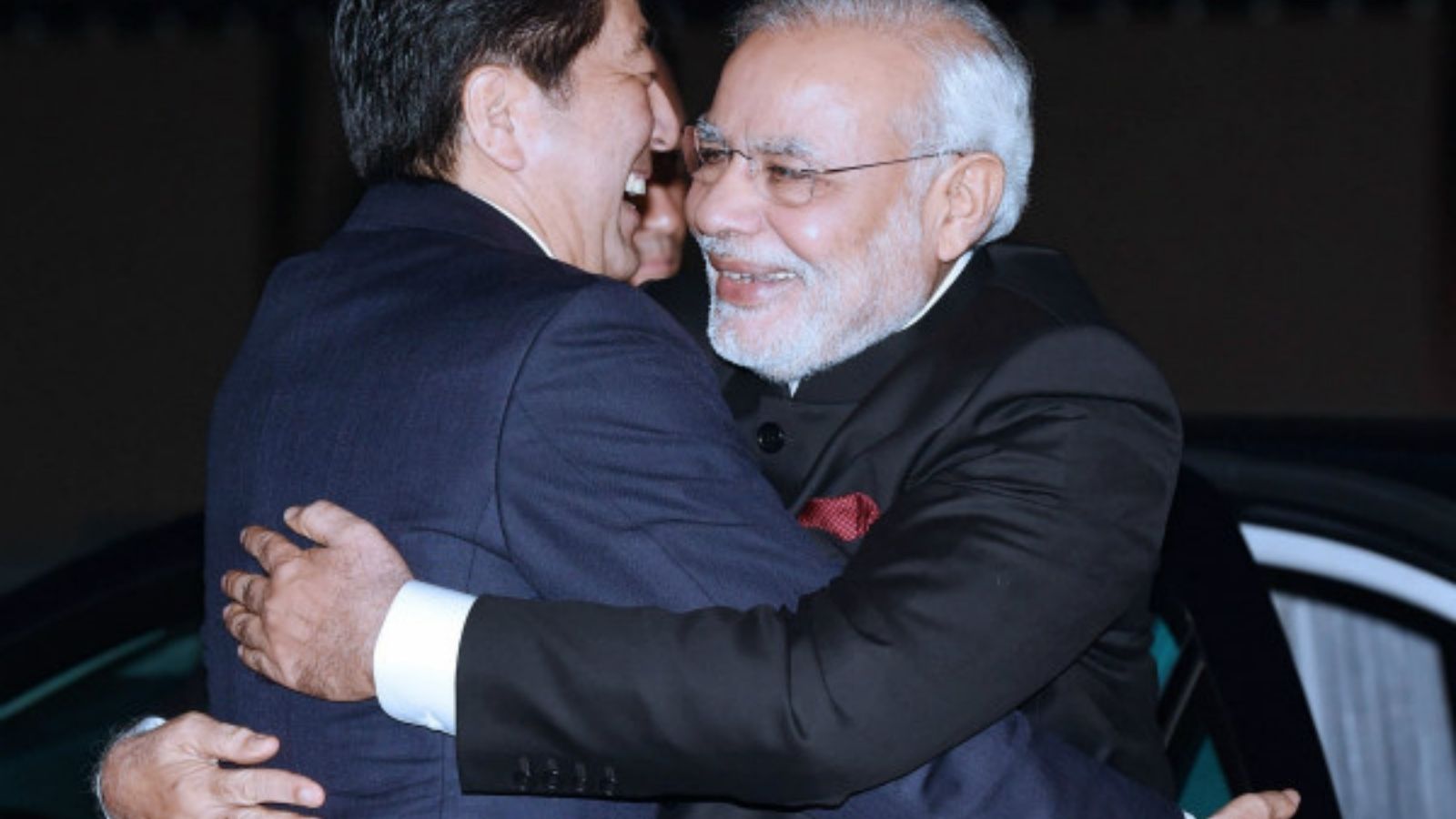By Paras Ratna, Research Associate – Strategic & Foreign Relations Practice at Rashtram
This article was published in the IPP Review
The source of the image is Vision India Foundation
Indian Prime Minister Narendra Modi’s visit to Japan on October 28, 2018 as part of the 13th annual summit between the two countries had brought to the fore the dynamics of the Indo-Japan bilateral relationship amidst the shifting contours of global politics.
Both India and Japan are confronting similar challenges in the Indo-Pacific and thus, the decision to deepen their cooperation seems to be a default choice. Besides the convergence of interests, Prime Ministers Modi and Shinzo Abe share excellent personal rapport and are hailed as strong right-wing nationalist leaders in their respective countries. This is PM Modi’s third visit to Japan since he assumed office in 2014. He hosted PM Abe in his home state Gujarat with great fanfare; the same was reciprocated by Abe in the form of private dinner at his picturesque Yamanashi holiday home.
Crucial agreements that were signed include a joint high speed rail project for which the first installment of INR 55 billion had been released by the Japanese Industrial Cooperation Agency (JICA) a month before; increased naval cooperation between the Indian Navy and the Japan Maritime Self-Defense Force (JMSDF) in the Indo-Pacific; a currency swap of USD 75 billion that is expected to bring a sigh of relief amidst the looming threat of trade war and rapid depreciation of rupees vis-à-vis dollar; 2+2 agreements on the lines of the US; and the commencement of negotiations to finalize Acquisition and Cross-Servicing Agreements (ACSA) which would allow both navies to access each other’s military bases for logistics purpose. While India will be able to access the Japanese base in Djibouti, the Japanese navy may dock at Andaman and Nicobar. Although PM Abe eased restrictions on defense export policy in 2014, Indo-Japanese cooperation on defense technology and equipment is far from satisfactory. Closer defense cooperation is a prerequisite for any strategic partnership.
The Japan-India relationship has expanded significantly in recent years with the ever-growing intersection between their foreign policy interests. PM Abe, while addressing the Indian parliament a decade back, said: “A strong India is in the best interest of Japan, and a strong Japan is in the best interest of India.” In addition to the strategic sphere, Japan is India’s third largest investor. Between 2000-2017, USD 25.6 billion was invested by Japan in sectors like infrastructure, retail, textiles, and consumer durables. Tokyo was involved in big-ticket projects like the Delhi-Mumbai industrial corridor (DMIC), the Mumbai-Ahmedabad bullet train, and the setting up of around 12 industrial parks across different states in India, including Tumkur in Karnataka, Ghilot in Rajasthan, Mandal in Gujarat, Supa in Maharashtra, Ponneri in Tamil Nadu, Neemrana in Rajasthan, Jhajjar in Haryana, and the Integrated Industrial Township in Greater Noida.
Together India and Japan have constituted the “Japan-India Act East Forum” whose objective is to spearhead development cooperation in North Eastern states bordering China, Bangladesh, and Myanmar. JICA has already signed an agreement worth USD 610 million with the government of India for phase I of the North East connectivity projects. These infrastructure projects are also motivated by strategic logic as critical projects like NH-54 (Aizwal-Tuipang) will complement projects like the Kaladan Multimodal project which is aimed at connecting Kolkata port in India with Sittwe port in Myanmar.
Although the Indo-Japan relationship has a rationale of its own, it is important to analyze thecontext of PM Modi’s visit to Japan. The visit assumes a special significance as it happens to take place in the backdrop of an unexpected Xi-Abe meeting just days before. Japanese PM Abe visited China for the first time in seven years and the fanfare on display was in stark contrast to the usually tense China-Japan relationship over islands in the East China Sea called Senkaku by Japan and Diaoyu by China. The tension reached its zenith in September 2012, when the Japanese government nationalized the Senkaku/Diaoyu islands. It led to widespread protests on the streets of Beijing with Japanese automobile companies being targeted. The then Japanese Ambassador Uichiro Niwa was called in to receive a strong protest by the Chinese foreign ministry. PM Abe was handed a cold reception during the APEC summit by his Chinese counterpart Xi and was made towait in Beijing’s great hall, a deviation from the established protocol.

